A Poison Tree tattoo is more than just ink; it is an emotion carved in art, a silent story of anger, forgiveness, and transformation. It speaks for the hearts that have carried secrets too heavy to voice and for souls that have learned beauty can grow even from pain. Each line, each root, holds the memory of something once hidden now reborn in strength.
This tattoo draws its soul from William Blake’s haunting poem, where emotions bloom like forbidden fruit on a tree fed by wrath and silence. It reflects the journey from darkness to light, from resentment to revelation. To wear it is to embrace one’s inner storm and let it blossom into poetic resilience.
What Does a Poison Tree Tattoo Actually Mean?

At its core, the Poison Tree tattoo is a symbol of repressed emotion. It represents what happens when anger is left unspoken, when sorrow takes root, and when bitterness blossoms in silence. This tattoo speaks to those who have known the ache of betrayal, the weight of resentment, and the struggle of forgiveness.
In its image a tree bearing toxic fruit lies the truth that not all beauty is pure. The tree’s roots are nourished by wrath, its branches heavy with the fruits of vengeance. It tells a cautionary tale: that when we nurture our anger, it grows into something consuming and poisonous. Yet, for many, this tattoo is not about vengeance; it’s about release. It’s a way of saying, “I acknowledge my darkness, but I no longer let it define me.”
For some, it’s a mirror of transformation from pain to power, from silence to expression. The Poison Tree becomes a living metaphor for emotional awareness, teaching that even the most venomous emotions can bear wisdom when faced with honesty.
The Literary Foundation – William Blake’s “A Poison Tree” and Its Tattoo Influence
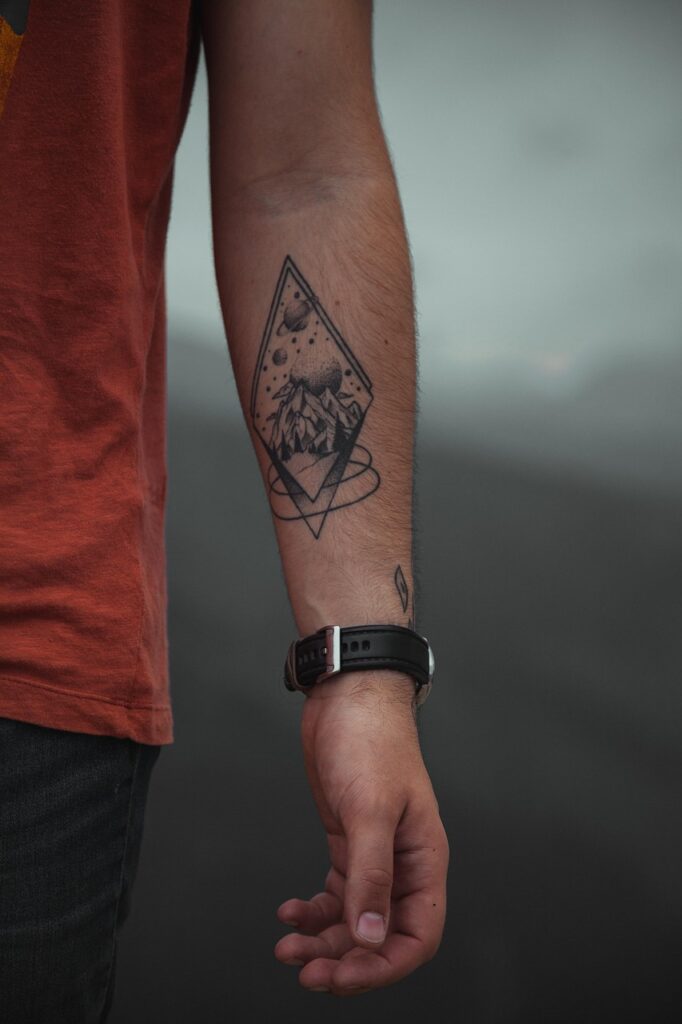
The origins of the Poison Tree tattoo trace back to William Blake’s 1794 poem a Poison Tree. In it, Blake explores the dangerous growth of suppressed anger. The speaker’s wrath, when hidden, becomes a tree that bears a deceitful fruit one that ultimately leads to destruction.
Blake’s words unravel the psychology of human emotion:
I was angry with my foe:
I told it not, my wrath did grow.
This poem resonates deeply with those who find art in introspection. The tattoo inspired by Blake’s work becomes a literary homage a fusion of ink and verse, symbolizing how emotional poison can both destroy and enlighten.
To wear a Poison Tree tattoo is to wear a piece of poetry on the skin. It’s a tribute to Blake’s vision, but also an individual’s acknowledgment of personal turmoil and the beauty that can rise from pain. For many literary souls, it becomes a conversation between the past and the present between Blake’s quill and their own journey of emotional rebirth.
Why People Choose Poison Tree Ink
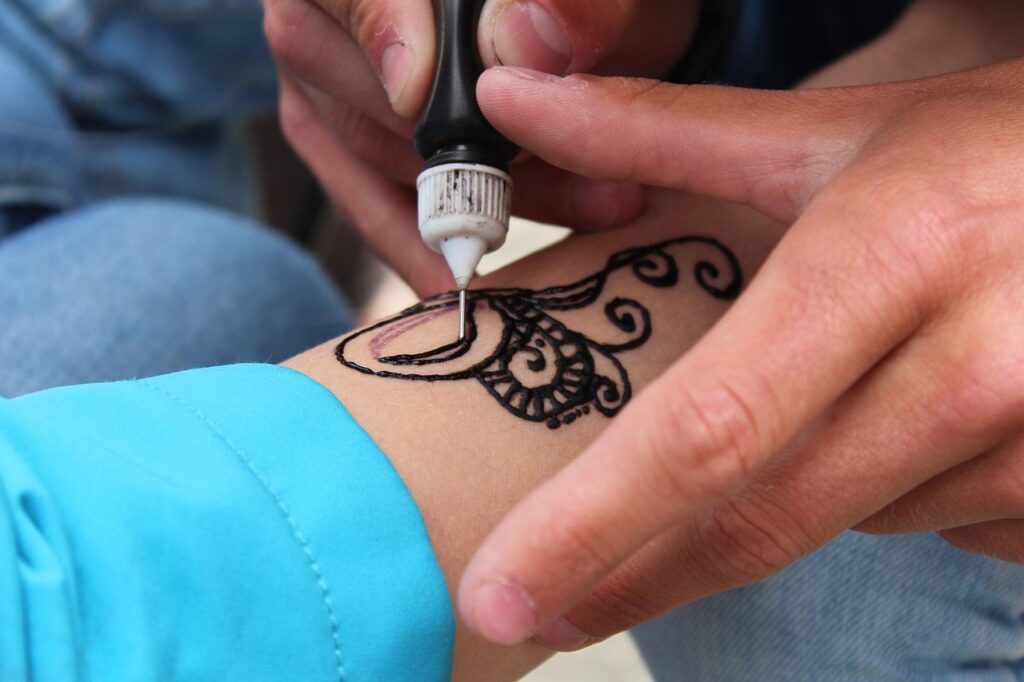
People choose Poison Tree tattoos for reasons as diverse as the branches of the tree itself. For some, it’s a personal symbol of the battle within a visual representation of the emotions they’ve tamed or survived. It becomes a reminder that suppressed feelings can poison, but confronting them leads to freedom.
Others see it as a symbol of artistic rebellion. The Poison Tree defies the idea that beauty must always be pure. Its twisted form, its dark fruit, and its shadowed roots speak of truth that pain and beauty can coexist harmoniously.
For those drawn to literature, philosophy, or gothic art, this tattoo also represents intellect and depth. It says: “I have read my darkness, and I understand it.” Some choose it as a dedication to mental and emotional resilience, others as a quiet act of self-forgiveness.
Every person who bears this design carries a story of love turned sour, of friendships betrayed, of words unspoken. Yet beneath it all lies a shared message: growth can come even from poisoned soil.
Spiritual Meaning of the Poison Tree

Spiritually, the Poison Tree carries profound symbolism. It represents the duality of human nature good and evil, light and dark, healing and harm. In many cultures, trees are sacred; they connect the earth to the sky, the physical to the divine. But the Poison Tree stands apart it is the forbidden, the ignored, and the truth untold.
In spiritual interpretation, the Poison Tree reminds us that we cannot ascend to light without facing our shadow. It teaches that emotional poison, when recognized, can become spiritual medicine. The roots of anger can turn into wisdom when watered with understanding.
Many believe that a Poison Tree tattoo signifies emotional awakening the realization that every dark feeling carries a lesson. It’s a reminder to accept our flaws and transmute our pain into power. In this way, the tattoo becomes a living prayer: a balance between the poison within and the purity we seek.
Popular Poison Tree Tattoo Design Variations You’ll See in American Parlors
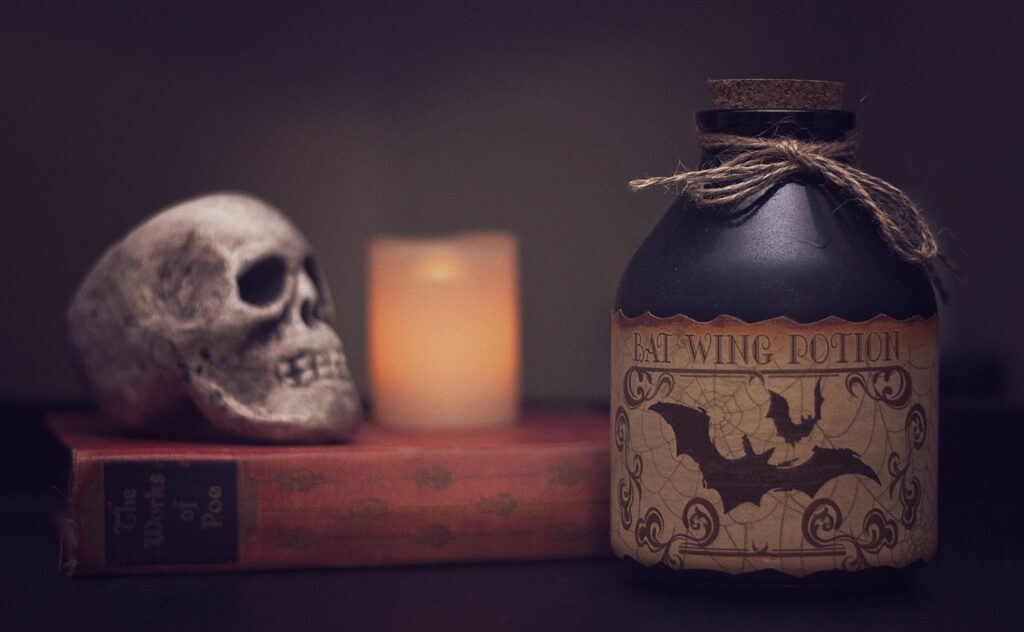
Tattoo artists across American parlors have reimagined the Poison Tree in countless mesmerizing ways. Some designs remain loyal to Blake’s vision a tree bearing a single gleaming, deadly apple. Others modernize the imagery, blending gothic motifs with surreal elements like skulls, serpents, and glowing hearts.
Here are some popular variations you’ll often see:
- Black and Grey Gothic Trees: Twisted roots, shadowed bark, and dark fruit a visual ode to inner turmoil.
- Blake-Inspired Illustrations: Incorporating handwritten poetry or verses from a Poison Tree.
- Heartfruit Design: The fruit of the tree shaped like a heart symbolizing love’s darker side.
- Half-Dead Tree: One side blooming, the other decaying, representing emotional balance and duality.
- Serpent and Fruit Motif: A nod to temptation, secrecy, and the Biblical echo of forbidden knowledge.
Artists often infuse color deep reds, blacks, and muted greens to symbolize the slow pulse of resentment turning into rebirth. Whether minimalistic or elaborate, each design carries a whisper of both warning and beauty.
Dark Romanticism and Gothic Aesthetics
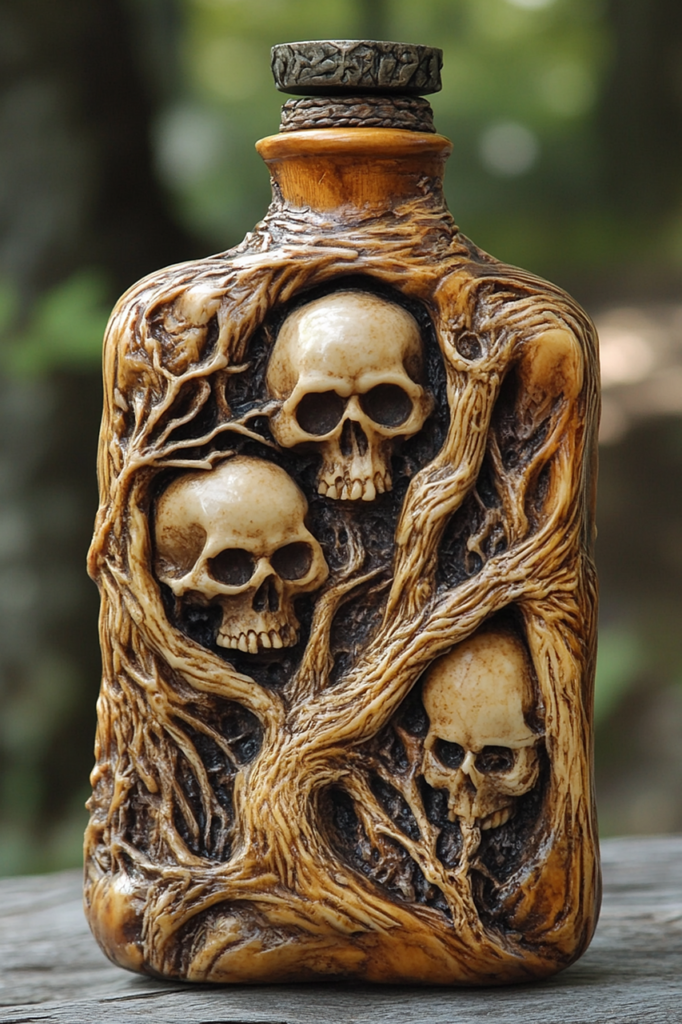
The Poison Tree tattoo perfectly fits the essence of Dark Romanticism the artistic movement that embraces human emotion, sin, and the sublime beauty of sorrow. Like the works of Poe or Shelley, this tattoo glorifies the complexity of the human soul. It acknowledges that even darkness has its own poetry.
In Gothic aesthetics, the Poison Tree becomes a visual sonnet of decay and beauty intertwined. The design often features shadowed moons, ravens, or crumbling branches each a metaphor for loss, desire, and mortality. It’s the art of finding loveliness in despair, of turning inner chaos into creative expression.
For those who wear it, the tattoo is not morbid. It is honest. It speaks of the unseen wars within us and celebrates the courage it takes to face them. It reminds the world that even poison, when transformed, can become art.
Psychological Interpretation – What Your Poison Tree Tattoo Says About You

On a psychological level, a Poison Tree tattoo reveals a soul unafraid of introspection. It suggests that you’ve faced emotional storms perhaps betrayal, heartbreak, or unspoken resentment and chosen to express rather than suppress.
This tattoo often belongs to thinkers, empaths, and survivors. It indicates a mind that understands the delicate balance between rage and peace. Psychologists might interpret it as a visual expression of emotional integration the process of accepting both light and shadow within oneself.
It also reflects emotional maturity: the awareness that repressed anger can destroy, but acknowledged anger can heal. It says, I’ve tasted bitterness, but I no longer let it define me.
For others, it is a statement of individuality an emblem of creative rebellion, intellectual depth, and personal freedom. The Poison Tree tattoo, in its deepest essence, is not about venom; it’s about growth after the poison.
Placement Ideas That Enhance Your Poison Tree Tattoo’s Symbolic Power

Placement transforms meaning. A Poison Tree tattoo on the chest speaks of carrying emotional weight close to the heart where secrets and sorrows are kept. Placed on the back, it becomes a symbol of what one has left behind, a garden of memories that grows silently in the shadows of the past.
For those who choose the forearm, it tells a story of openness and courage. It’s a statement: “I’ve been hurt, but I choose to show my scars, not hide them.” A tattoo along the spine, however, carries a spiritual power it aligns with the body’s core, symbolizing the awakening of strength after suffering.
Even smaller placements on the wrist, shoulder, or ankle can whisper subtle stories of resilience. The placement is deeply personal; it is where emotion meets expression. Wherever it rests, the tattoo blooms with meaning, a living reminder of emotional evolution.
Color Symbolism in Poison Tree Tattoos – From Black Ink to Vibrant Reds

Color is emotion given form. In the world of Poison Tree tattoos, every shade tells a story. Black ink, timeless and stark, embodies repressed anger, mystery, and introspection. It captures the quiet storm within a restrained power that speaks volumes without color’s noise.
When red is introduced, the symbolism intensifies. Red apples, crimson roots, or bleeding leaves represent passion, betrayal, and the raw pulse of human emotion. It’s a color of warning and temptation, evoking both danger and desire.
Some choose to blend green hues, symbolizing envy, growth, and renewal the paradox of something poisonous also being alive. Others use pale greys and muted tones to reflect melancholy and solitude. The right color palette transforms the tattoo into an emotional landscape a piece of the wearer’s inner world painted onto skin.
Biblical and Religious Connections

The Poison Tree holds deep Biblical undertones, echoing the story of the Tree of Knowledge in Eden the forbidden fruit, temptation, and the fall of innocence. It’s a symbol of the dangerous beauty of desire and the consequences of unspoken sin.
Spiritually, the Poison Tree tattoo reminds believers and non-believers alike of the fragile balance between good and evil. Some see it as a warning: unchecked emotions and deceitful charm can lead to ruin. Others interpret it as redemption how understanding one’s darkness leads to enlightenment.
In Christian symbolism, the Poison Tree often mirrors the struggle between divine love and human wrath. For others influenced by mysticism or Eastern philosophies, it can represent karma the fruits of one’s actions, bitter or sweet. The tree, in all faiths, becomes a mirror of the soul’s choices and the lessons that come from them.
Combining Elements – Skulls, Ravens, and Other Symbols with Poison Trees

A Poison Tree tattoo rarely stands alone. Many choose to weave other symbols into its branches, adding depth to the story it tells. Skulls, for instance, merge naturally with this imagery symbols of mortality and the inevitable consequences of emotional poison. They remind us that every dark thought carries a cost.
Ravens, mysterious and intelligent, bring the touch of prophecy and mystery. Their black wings whisper of wisdom earned through pain, transformation through loss. Snakes often curl around the tree’s trunk, symbolizing temptation, knowledge, and the eternal cycle of destruction and rebirth.
Some artists add eyes hidden among the leaves signifying self-awareness or the idea that nothing stays buried forever. Others adorn the tree with falling fruit, shattered hearts, or crescent moons to emphasize phases of healing and self-discovery. When combined, these elements create not just a tattoo, but a visual narrative one as complex and haunting as the emotions that inspired it.
Celebrity Poison Tree Tattoos and Pop Culture Influence
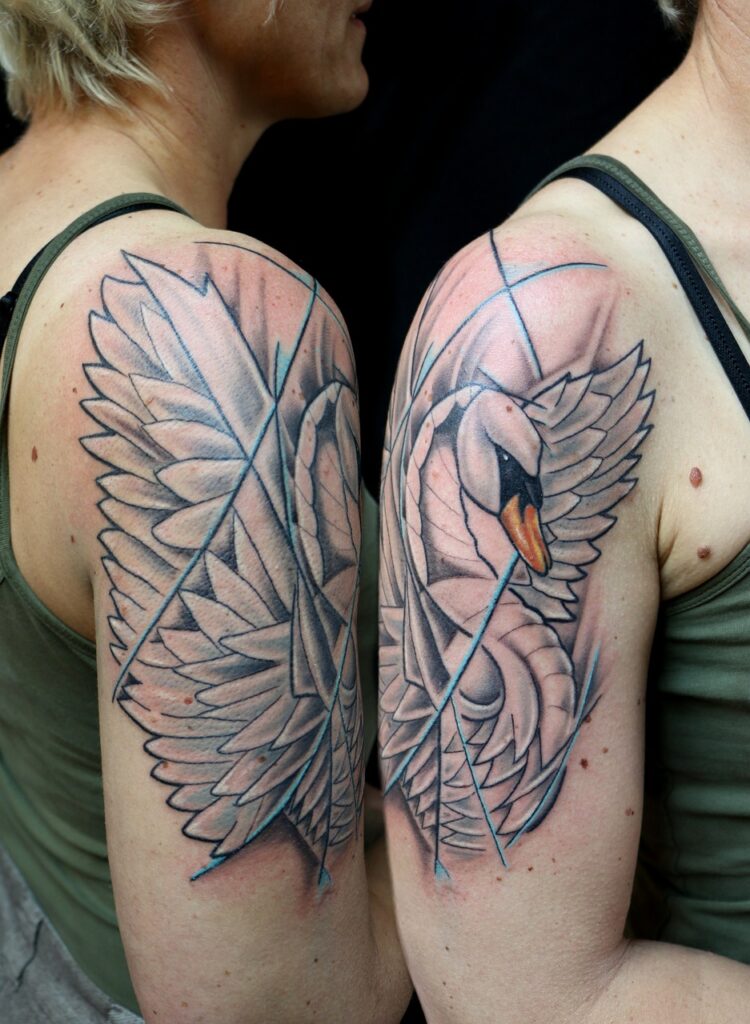
While the Poison Tree tattoo remains a deeply personal choice, its symbolism has quietly infiltrated pop culture. From rock musicians to literary artists, many public figures have embraced tattoos that echo Blake’s imagery whether or not they name it directly.
Musicians have especially gravitated toward this design, drawn to its blend of rebellion and vulnerability. It has appeared in album art, music videos, and even film symbolism used to portray deceit, inner rage, or the beauty of downfall.
Celebrities often reinterpret the Poison Tree theme to reflect their own stories: a heartbreak, a personal rebirth, or an artistic transformation. Through them, the image becomes universal proof that even in fame, human emotions still wrestle between bitterness and growth. This quiet rise in visibility has inspired countless fans to seek their own symbolic trees, turning literary art into living legacy.
Choosing the Right Artist for Your Poison Tree Design

The Poison Tree tattoo demands an artist with emotional depth and creative vision. It’s not just about technical skill it’s about interpretation. When choosing an artist, look for someone who understands symbolism, who can translate poetry into ink.
Artists experienced in realism or illustrative styles often bring this design to life best, capturing both the organic beauty of the tree and the shadowy tone of its meaning. Review portfolios and find an artist who resonates with the message you want your tattoo to tell.
Collaboration is key. Share your story, your colors, your reasons. A good artist will listen, sketch, and refine until the design feels like your reflection. Remember, this tattoo is personal it’s a living narrative etched onto you. The right artist will make it more than art; they’ll make it truth.
Aftercare and Longevity
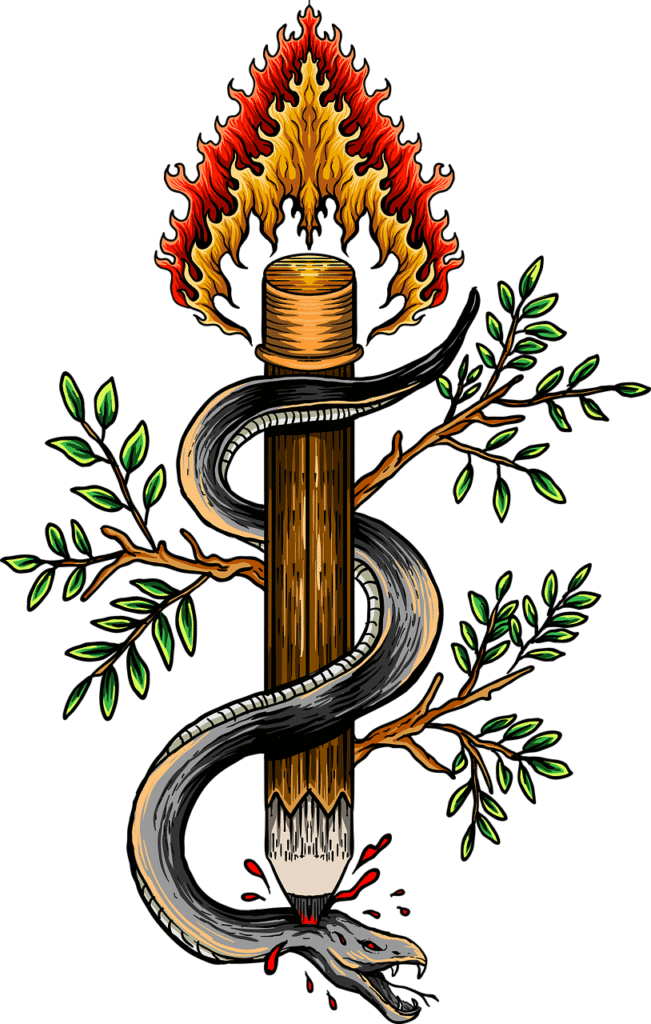
A Poison Tree tattoo is intricate, emotional, and often detailed—requiring careful aftercare to preserve its beauty. After the session, the tattoo is like a living wound; treat it gently. Use fragrance-free ointments, avoid sunlight, and never scratch healing skin.
Over time, black ink remains strong, but colored pigments especially reds and greens may fade faster if not protected from the sun. Moisturize regularly to keep the tattoo vibrant. Touch-ups every few years can restore its depth and clarity.
Beyond physical care, emotional care matters too. Each glance at your tattoo should remind you of strength, healing, and reflection. It is more than body art it is a daily dialogue with your past self, still whispering wisdom through the years.
Alternative Symbolic Trees in Tattoo Art – When Poison Trees Aren’t Right for You
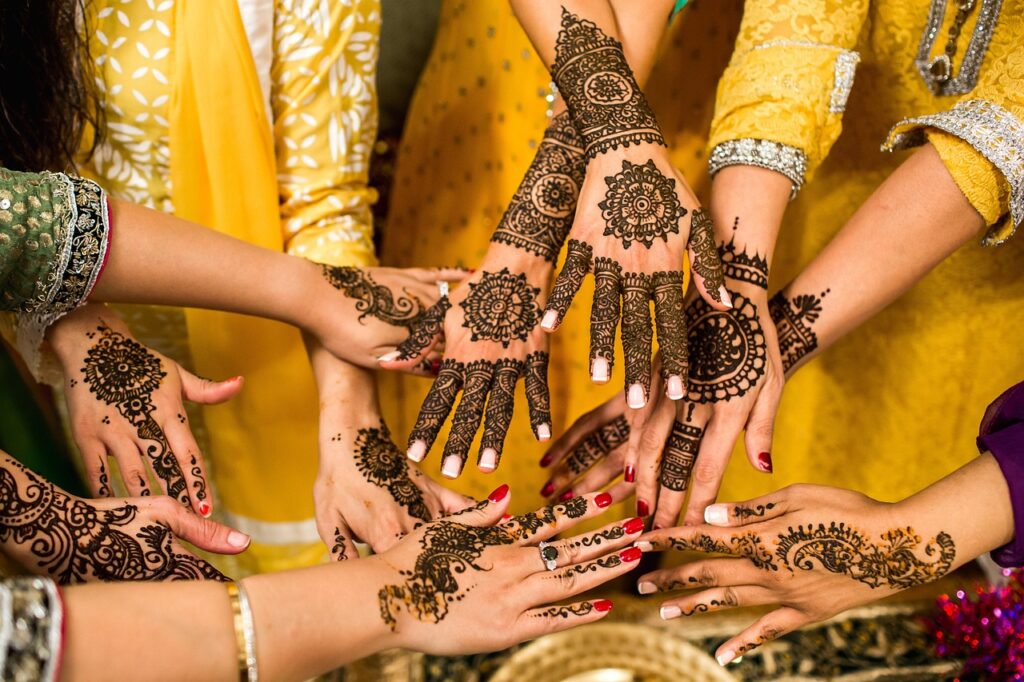
For some, the Poison Tree may feel too dark, too heavy with meaning. There are many other symbolic trees that speak different emotional languages. The Tree of Life represents growth, connection, and eternity ideal for those seeking light and renewal.
The Willow Tree embodies resilience and flexibility, bending but never breaking under life’s weight. The Cherry Blossom Tree, delicate and fleeting, symbolizes beauty in impermanence. Meanwhile, the Oak Tree stands for strength, endurance, and wisdom through time.
Choosing an alternative tree doesn’t mean abandoning emotion it means aligning symbolism with your journey. Each tree tells its own story, and sometimes the gentler ones offer peace where the Poison Tree offers reckoning.
Cost Considerations and Time Investment for Detailed Poison Tree Tattoos
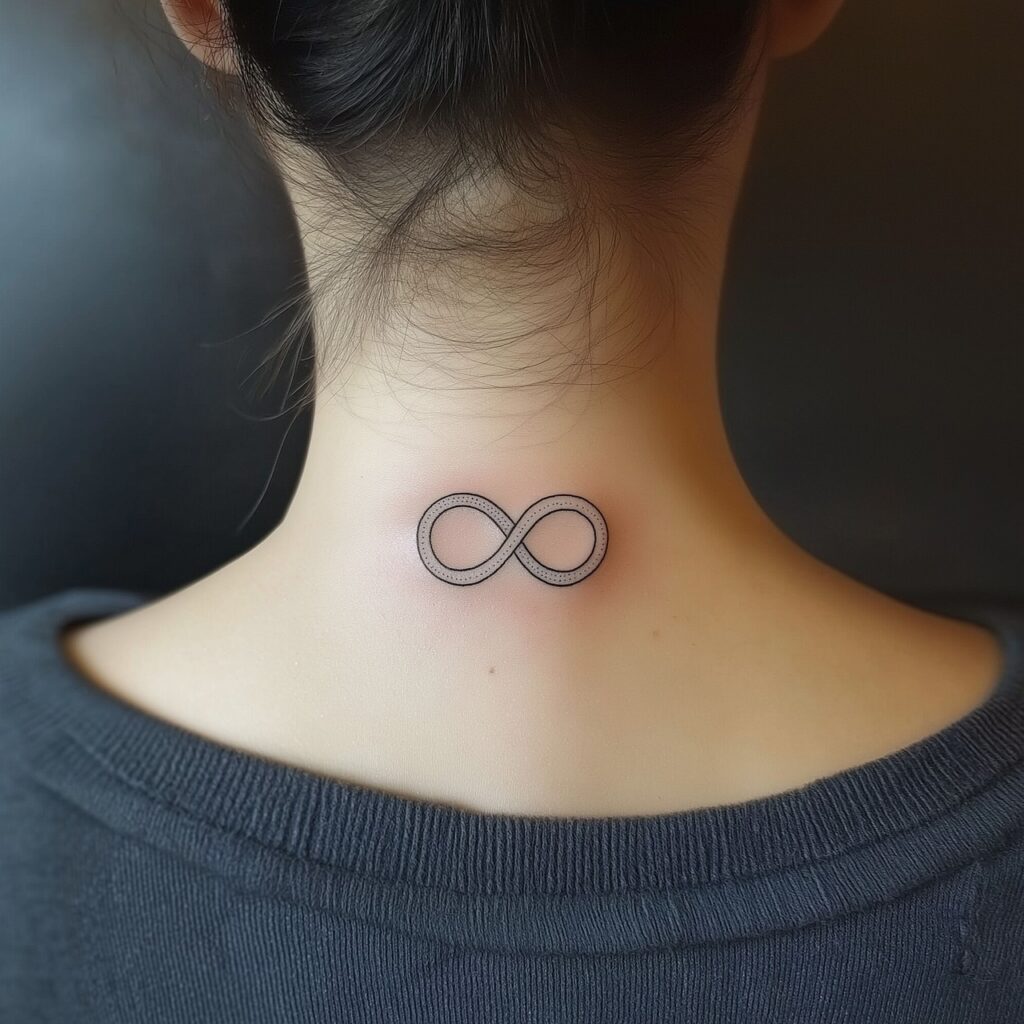
The Poison Tree tattoo, with its layered symbolism and intricate branches, can take significant time and investment. Small minimalist versions may cost modestly, but full, detailed pieces specially with color and shading can span several sessions.
Complex designs involving skulls, ravens, or elaborate roots often take 8 to 20 hours, depending on size and artist expertise. The cost varies widely by region and skill level, but remember: with art this meaningful, quality outweighs price.
Each session becomes a step in emotional storytelling pain giving way to beauty, ink transforming into memory. Those hours in the chair are not just for design; they are part of the healing ritual that this tattoo represents.
Cultural Sensitivity and Appropriation Concerns with Tree Symbolism

Trees carry sacred meanings across cultures spiritual bridges between worlds. When choosing a Poison Tree tattoo, it’s important to be mindful of cultural origins. Some tree symbols derive from Indigenous, Celtic, or Eastern traditions with spiritual significance that shouldn’t be altered or commercialized carelessly.
While the Poison Tree largely draws from Blake’s English literary roots, mixing it with other spiritual motifs requires respect and understanding. Always research symbols before combining them. Speak with your artist about cultural accuracy and intention.
True artistry honors the cultures that inspired it does not borrow without gratitude. A tattoo is not just decoration; it’s dialogue. When done with awareness, it becomes a bridge, not a boundary.
Personal Stories – Real People Share Why They Chose Poison Tree Tattoos

Behind every Poison Tree tattoo is a heartbeat a story of love lost, anger released, or transformation found. One woman described her tattoo as “the garden I never spoke of”—a visual poem for all the pain she kept hidden. A man with a tree inked across his spine said it marked the moment he chose forgiveness over revenge.
For others, it is about creativity, rebellion, or honoring literature that changed their lives. Each story is different, yet all share a common root: the courage to turn pain into art.
The Poison Tree tattoo, in the end, is more than design it’s a confession turned masterpiece. It’s for those who have known the bitter taste of silence and decided to make it bloom into something unforgettable.
Would you like me to add a final conclusion at the end something poetic and emotional to give this article a soulful closure? It would connect all the meanings beautifully in 2 or 3 lyrical paragraphs.
Fraequently Asked Questions
What does a Poison Tree tattoo symbolize?
It symbolizes hidden emotions, anger transformed into beauty, and the power of silent healing through art.
Why do people choose Poison Tree tattoos?
They choose it to express pain, forgiveness, and the poetic balance between darkness and light within the soul.
What is the connection between William Blake and the Poison Tree tattoo?
The design is inspired by Blake’s poem, where suppressed anger grows into a haunting, symbolic tree of emotion.
What colors are most meaningful in Poison Tree tattoos?
Deep blacks and crimson reds reveal passion, pain, and rebirth, painting emotion directly onto the skin.
What does a Poison Tree tattoo say about the wearer?
It speaks of resilience, self-awareness, and the courage to turn heartbreak into poetic strength and wisdom.
Conclusion
The Poison Tree tattoo is more than a design; it is an emotional confession etched into the skin. It speaks of silent anger, of pain that was once hidden, and of the beauty that blooms when one dares to face the darkness within. Each line and shade tells a story of healing, forgiveness, and the power of emotional truth.
Wearing this tattoo is like carrying a poem beneath your skin a reminder that even from poisoned roots, something beautiful can grow. It captures the soul’s journey from bitterness to peace, from secrecy to strength. In its haunting elegance, the Poison Tree tattoo becomes a symbol of rebirth through the art of feeling deeply.

